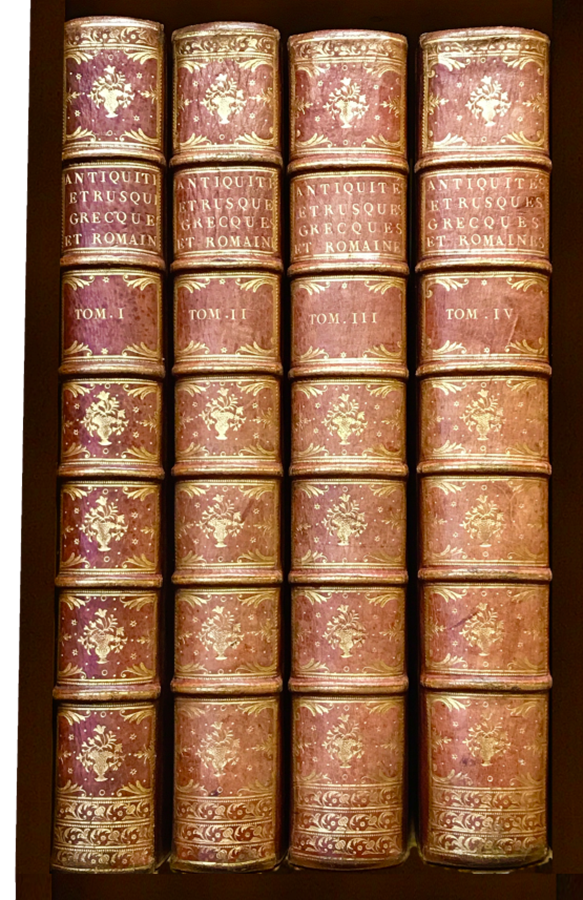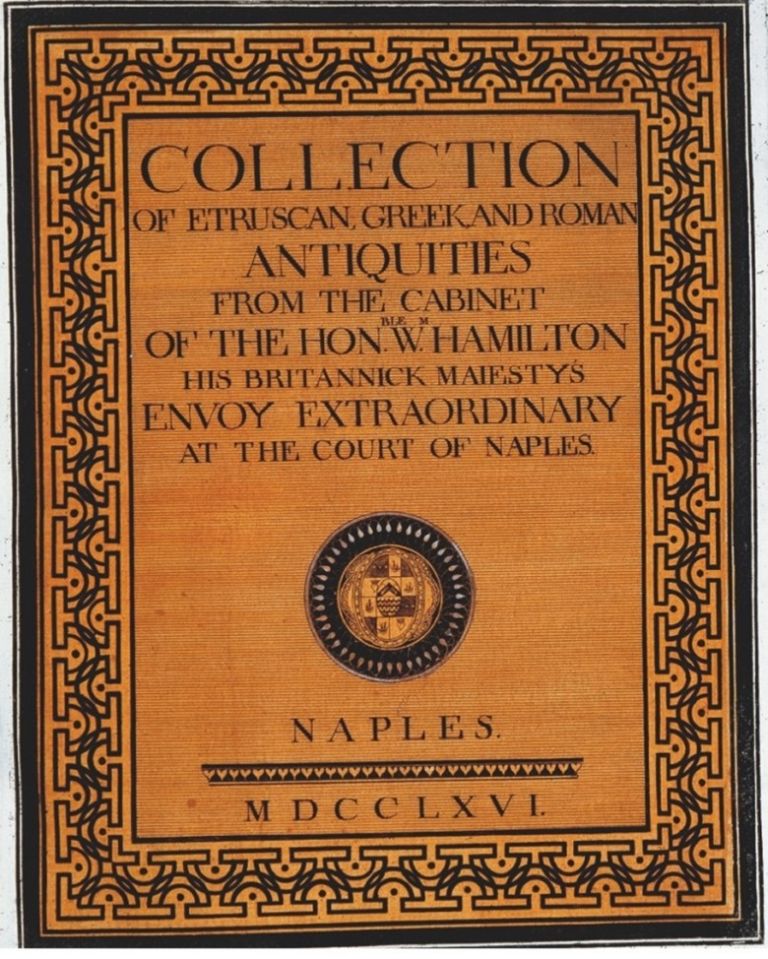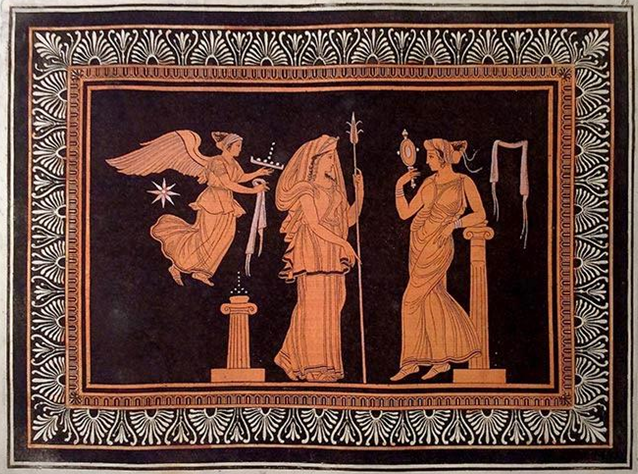
Collection of Etruscan, Greek and Roman Antiquities from the Cabinet of the Honourable William Hamilton
Volumes I and II were printed in Naples by François Morelli and first appeared in 1767 and 1770 respectively. Volumes III and IV were printed in Florence and first appeared in 1776.
Four volumes. First edition. Magnificently bound in full red Morocco leather with five raised bands to the spine and gold-tooled panels. Back and front boards elegantly trimmed with gold frames. All edges gilt. 456 plates printed in black ink over an existing terracotta wash background, with hand-painted highlights of white, scarlet, green, and yellow gouache. 377 single plates, of which 123 are coloured. 79 double plates in colour. 70 vignettes and initials, of which 14 are in double tone (particular to Volume IV). 19.5×15cms. Parallel English and French texts by Pierre Francois Hugues, baron d'Hancarville (1719 - 1805).
Sir William Hamilton financed the publication of ‘Etruscan, Greek and Roman Antiquities’ in 1766, intending to advertise his collection of vases and thereby to encourage its eventual purchase by the British Museum in 1772. Baron d'Hancarville, the art dealer who had arranged the transfer of the collection from the Porcinari family to Hamilton, wrote the accompanying essays. His stylistic chronology of ancient vase painting was informed by contemporary theories developed by the German art historian Johann Joachim Winckelmann (1717–1768) during his appointment as Superintendent of Roman Antiques.
Only two of the four volumes had been completed when Hancarville went bankrupt and fled Naples in 1769. Production of the remaining volumes was stalled until Hamilton was able to buy back the plates from the creditors. Vincenzo Mazzeranghi took over editorial control from 1773 and volumes III and IV were finally published in Florence in 1776.
Hamilton’s collection played a considerable part in fostering the Neoclassical taste in Britain. By 1769, Josiah Wedgwood had already produced vases designed after plate 129 in volume I and the dedication-plate to King George III, both from engravings Hamilton had sent him as promotional materials, in advance of their publication. At Newtimber Place, Sussex, and Bowood, Wiltshire, entire rooms were decorated based on images from the Etruscan, Greek and Roman Antiquities.
Volume I: Devoted to the origin and history of the Etruscans, the antiquity of the Tuscan order, and the arts of sculpture and painting. With a preface of XXV pages (dated April 30th, 1766) and 177 numbered text pages. 94 single plates (31 in colour and 63 black & white), 15 colour double plates, 20 illustrations in text. Contains explanations for 23 plates.
Volume II: Concerned with the history and making of vases and vase-paintings. 169 numbered text pages. 107 single plates (44 in colour and 63 black & white), 19 double plates (18 in colour and one black & white), 12 illustrations in the text. Includes explanations for plates 32 to 130.
Volume III: Devoted to the history of Greek sculpture, from the Archaic period to the death of Alexander the Great. 211 numbered text pages. 84 single plates (21 in colour and 63 black & white), 22 colour double plates, 22 illustrations in the text.
Volume IV: Concerned with the history of Greek sculpture, from the Archaic period to the death of Alexander the Great. 252 numbered text pages. 92 single plates (27 in colour and 65 black & white), 23 double plates, 16 illustrations in the text (14 in colour).



Ref: 121393
£240,000.00
to order you can call the shop at +44 (0)20 7930 9223
or email us at artbooks@heneage.com